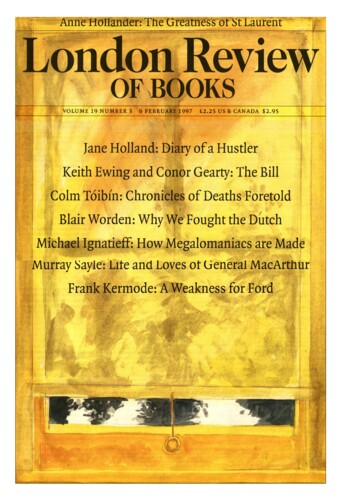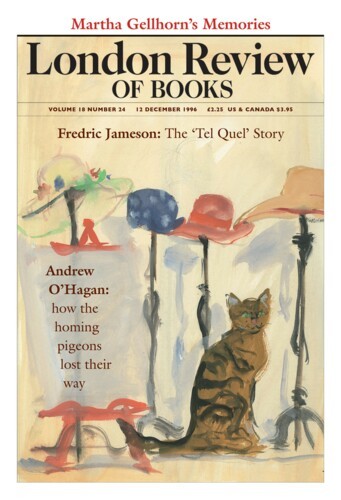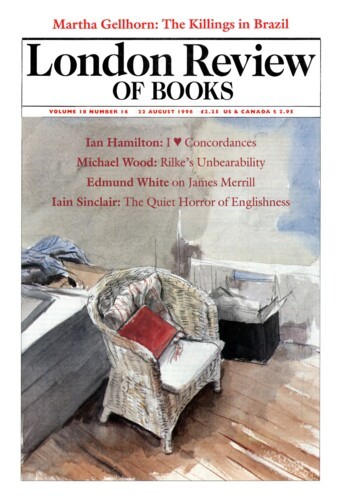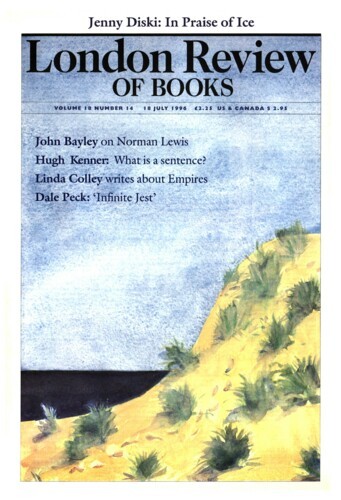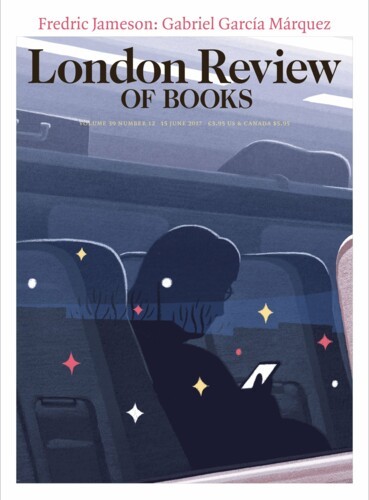Wounding Nonsenses
E.S. Turner, 6 February 1997
The letters exchanged by Nancy Mitford and Evelyn Waugh over twenty years were written, we are told, ‘to amuse, distract or tease’, a welcome function no doubt in times of bogged-down creativity. But it is clear they were also written to amuse, distract and tease posterity, since both correspondents were confident their dispatches would end up in the public domain, a consideration which did nothing to inhibit the flow of malice. Quite early in the correspondence Darling Nancy tells Darling Evelyn: ‘I’ve left you [in her will] all the letters I’ve kept. Your daughter Harriet might edit them.’ Asked by Waugh to burn a recent letter which was unfair to a friend, she replies: ‘What a rum request. I specially treasure your nasty letters, posterity will love them so. However just as you say.’ On a later occasion, tidying up his letters in a drawer, she muses: ‘I must ask Randolph [Churchill] how much he will give me for them.’ Literary jackals abound. Waugh warns that Cyril Connolly is ‘up to something rather fishy in collecting letters, I think for sale in America. Be wary! There is a nice nest egg for us all in our senility in our correspondence. American Universities are buying them at extravagant prices.’
